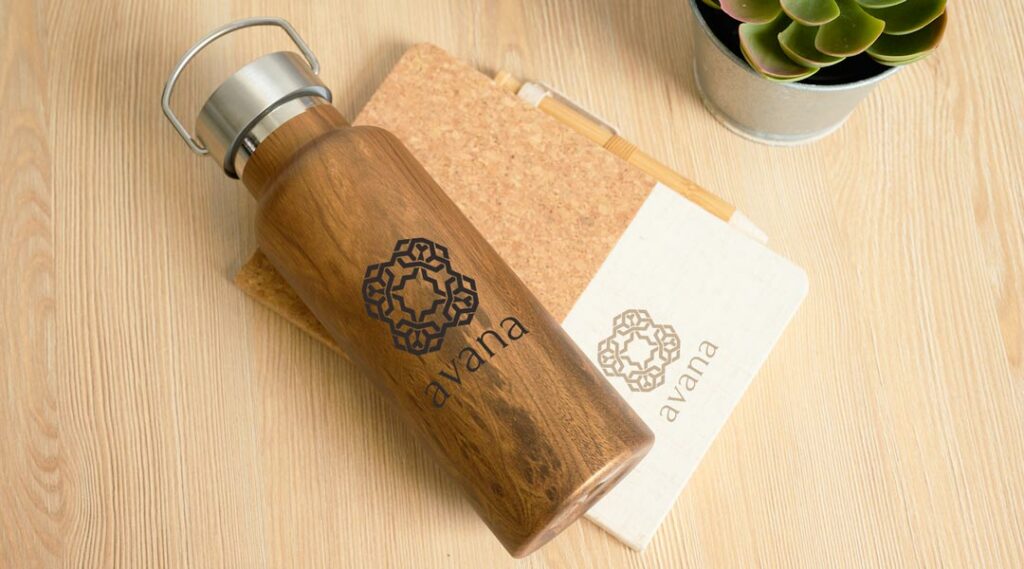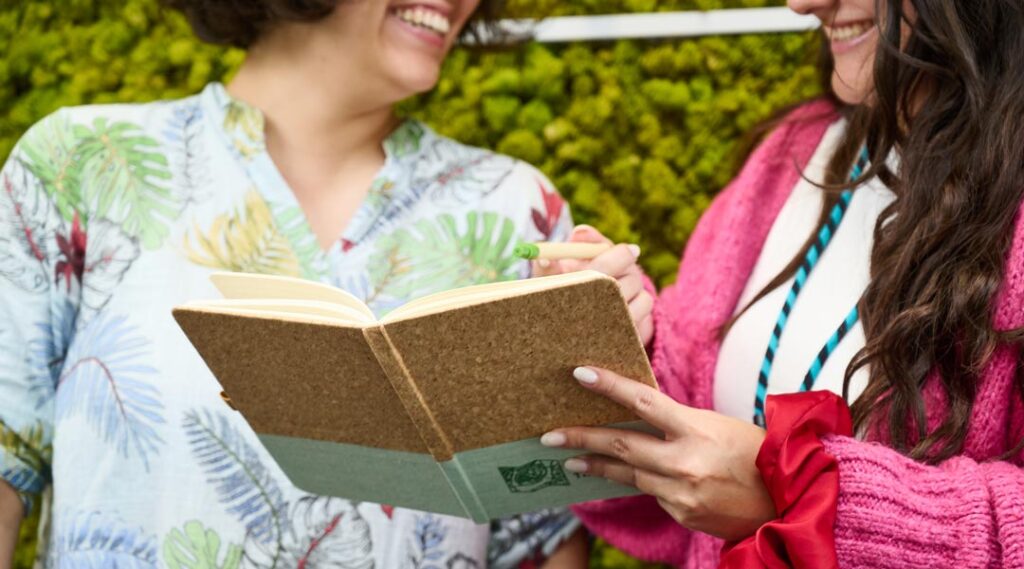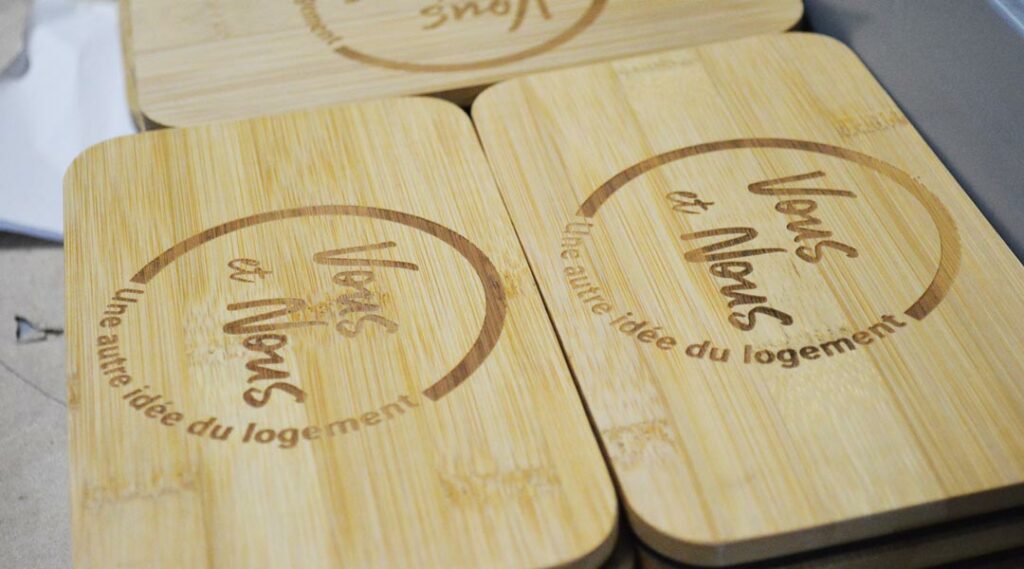
When it comes to selecting promotional gifts for your business, the choice of material is absolutely crucial. Whether it’s due to its environmental impact, durability, cost, or aesthetics, you need to choose an item that truly reflects your company’s values and identity. While wood and cork are both popular plant-based options, they are often mistaken for one another. In this article, you’ll discover a thorough comparative study that delves into the main characteristics, advantages, and disadvantages of each material, empowering you to make an informed decision. By the end, you’ll be fully equipped with the knowledge to make the best choice between these two materials!
Cork vs Wood: What Are the Differences?
While both materials originate from trees, it’s essential to note that cork is distinct from wood. Derived from the outer layer of the cork oak tree’s trunk, cork stands apart from wood, which refers to the internal tissue of the trunk or branches. Understanding these differences is crucial for making informed choices about the materials we use.
What Are the Properties of Cork?
Cork is a remarkable and eco-friendly material known for its renewable, biodegradable, and locally sourced nature. The cork oak tree, primarily found in the western Mediterranean region, is where most of the world’s cork forests are located, with Portugal leading as the primary producer, accounting for over a third of the global cork supply.
One of the most remarkable aspects of cork is that it can be harvested without harming the tree, as the bark has the ability to regenerate. The initial harvest takes place after 25 years, and subsequent stripping can be done every 9-10 years, aligning with the bark’s natural regeneration cycle. Notably, the cork oak has a long lifespan of 170 to 200 years and contributes to environmental sustainability by absorbing considerable amounts of CO2 through photosynthesis. In fact, for every kilogram of cork, 50 kilograms of CO2 are absorbed, highlighting the entirely sustainable nature of cork cultivation.
This incredible material consists of air-filled cells, resulting in remarkable properties:
- Elasticity and Compressibility: Cork can be compressed without losing its flexibility. It returns to its original shape after compression, making it durable and resilient.
- Thermal Insulation: Its unique cellular structure effectively traps air, reducing heat transfer.
- Acoustic Insulation: Cork excels at absorbing vibrations and sound waves, making it a superb acoustic insulator.
- Lightweight: With an extremely low density, cork is effortlessly handled and transported.
- Waterproof: Thanks to suberin, a waxy substance present in its cells, cork is naturally waterproof.
- Fire Resistance: Cork is naturally fire-resistant and does not produce toxic gases when burned.
- Hypoallergenic: Its composition minimises the risk of allergies.
Due to its numerous qualities, cork is used in a variety of applications, including flooring, insulation panels, bottle stoppers, and certain fashion and decor items.
The only downside is its granular, rustic appearance, which may not appeal to everyone. This is one reason why some prefer wood.
Wood: Another Natural Option for Promotional Items
As mentioned earlier, wood is a plant-based material sourced from trees, which are transformed into various objects using their trunks, branches, and stems.
Wood is used in many fields, including construction, furniture, musical instruments, and environmentally friendly promotional items. It is a rigid and durable material, although its characteristics can vary depending on the type of tree used.
There are different types of wood, each with its own unique properties:
- Softwood: Light and relatively fast-growing. Examples include pine, fir, etc.
- Hardwood: Grows more slowly than softwood. It is denser and heavier. Examples include oak, maple, beech, and acacia.
Did You Know? Bamboo can’t be classified as either softwood or hardwood since it comes from a giant grass known as moso bamboo. It has the advantage of growing quickly, being lightweight yet strong, making it ideal for promotional items.
What qualities should I consider when choosing wood for my corporate gifts?
Corporate gifts often include items crafted from oak, maple, pine, beech, or acacia wood.
Wood is a durable material with a unique visual and tactile appeal due to its natural grain patterns, giving it a modern and professional style. It conveys an image of quality and prestige.
However, wood has some drawbacks, such as its weight and, depending on the type, its sensitivity to moisture. It may require specific maintenance to keep its appearance in top condition, as is the case with promotional chopping boards.
Tips for Choosing the Material for Your Branded Merchandising

Wooden Items for Your Business
Wooden products are always in style, offering durability, eco-friendly aesthetics, and a classic appeal. Elevate your promotional gifts with wooden keychains, pencils, custom kitchen accessories, branded pens, and engaging toys.
Embrace the modern and natural look by incorporating eco-friendly USB memory sticks and tech products made with wood, adding a touch of sophistication to your brand.
Find the Perfect Cork Promotional Item
Cork’s flexibility and malleability make it perfect for crafting a variety of sustainable branded merchandise. From coasters and mouse pads to high-tech accessories, pens, notebooks, and keychains, cork items are both practical and sustainable. Check out our top 3 best-selling cork products from our catalogue:
- Floating cork keyring
- Cork notebook: A5 with cork pen
- Cork bottle with cork sleeve
What Budget to Allocate for Plant-Based Materials?
When deciding on promotional items, it’s crucial to consider the budget.
The cost of an item depends on factors such as the manufacturing process, the rarity of the raw material, and transformation costs. Typically, wood is pricier than cork due to the additional time and resources required for processing. As a result, cork is a more cost-effective and economical option.
Choosing the Best Material for Your Corporate Social Responsibility Strategy
When it comes to your corporate social responsibility focus, consider the impact of using products made from natural or recycled plant-based materials for an eco-friendly approach.
Cork stands out as an excellent environmental choice due to its natural, biodegradable properties and low environmental impact. Moreover, cork forests play a crucial role in protecting ecosystems.
In the case of wood products, prioritise those with FSC or PEFC certification, ensuring sustainable forest management that is environmentally friendly, socially beneficial, and economically viable.
Recommendations for Customising Your Wooden and Cork Items
Laser Engraving
Imagine etching your logo, message, or symbol onto your wooden and cork items using the precision of a laser beam. This technique creates a permanent mark that offers exceptional durability for materials such as glass, metal, wood, and cork.
However, it’s important to note that with wood or cork, the outcome of the laser engraving may not always be uniform. The results can vary based on the color and texture of the item, as seen in the image below. Keep this in mind when choosing the right customization method for your wooden and cork items.

Colour Printing
Screen printing and pad printing are the go-to methods for creating striking designs on wood or cork. Choose from a wide range of colours using the Pantone Matching System (PMS) for consistent and accurate results. Stand out with vibrant promotional items!
Conclusion
In making your decision between wood and cork for your branded gifts, it is essential to consider your priorities regarding sustainability, aesthetics, budget, and environmental impact. Wood presents a prestigious look and exceptional durability, while cork offers the benefits of being lightweight, eco-friendly, and cost-effective. Depending on your specific needs, either material could be the ideal solution for your promotional products.